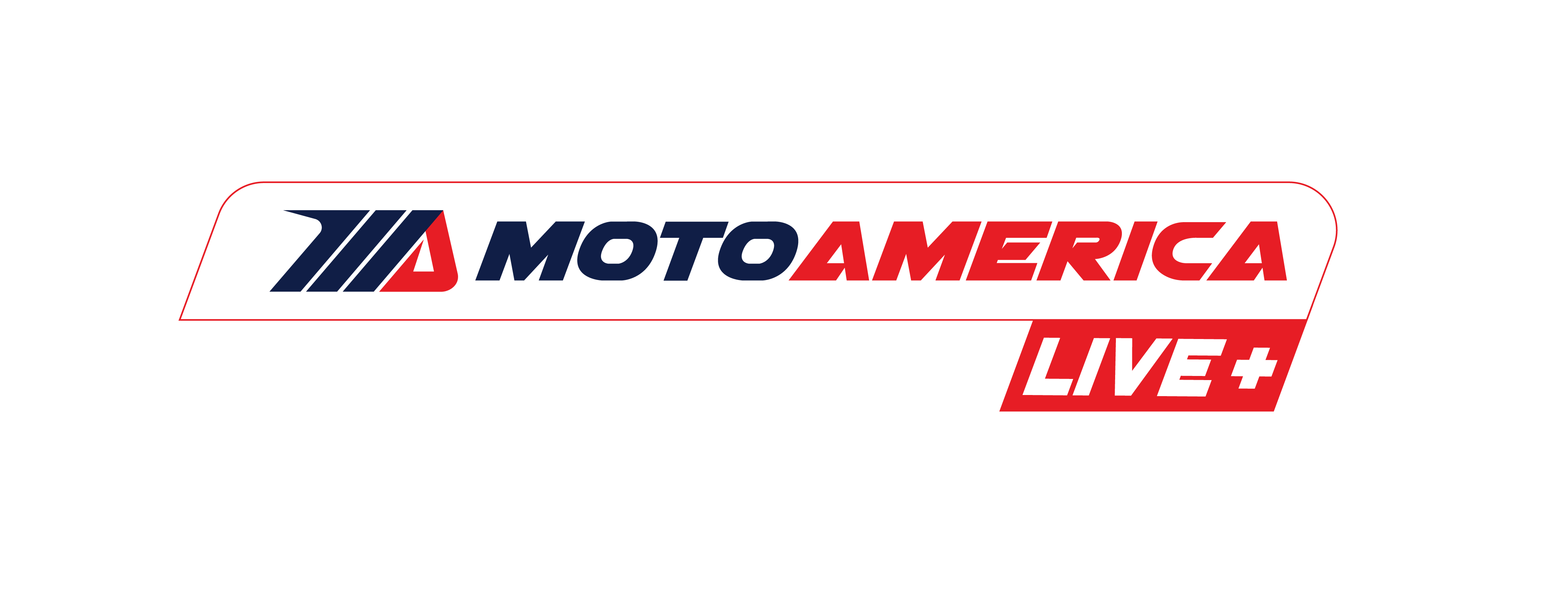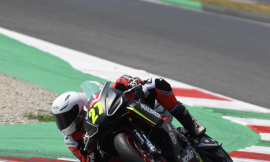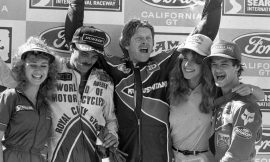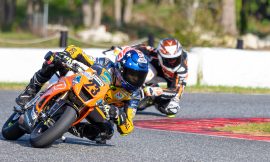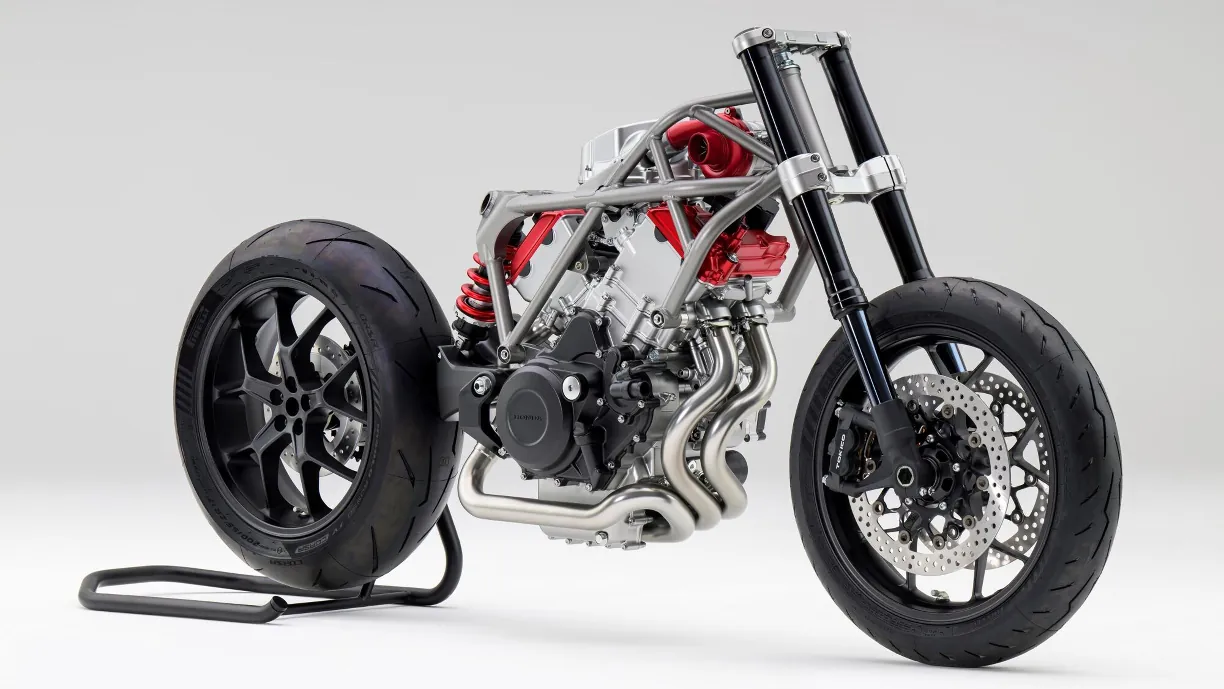
A discussion came up on the MotoAmerica-created “Motorcycle” Discord Server about the current and near-future three-cylinder motorcycles that compete and soon will compete in MotoAmerica’s Supersport class: the Triumph Daytona 675R, Street Triple 765 RS, and Daytona Moto2 765; the MV Agusta F3RR; and the upcoming Yamaha YZF-R9. One Discord member asked about engine configurations for those bikes, while another member correctly answered that they are all inline, three-cylinder engines. Yet another member said a V3 engine is impossible, which led to a history lesson about Honda’s 1982 to 1984 Honda NS500/NSR500 Grand Prix racing motorcycles, as well as the 1983 to 1984 Honda MVX250F and 1985 to 1987 Honda NS400R streetbikes, all of which featured V3 engines. Admittedly, those motorcycles all had two-stroke V3 engines, and that was then.
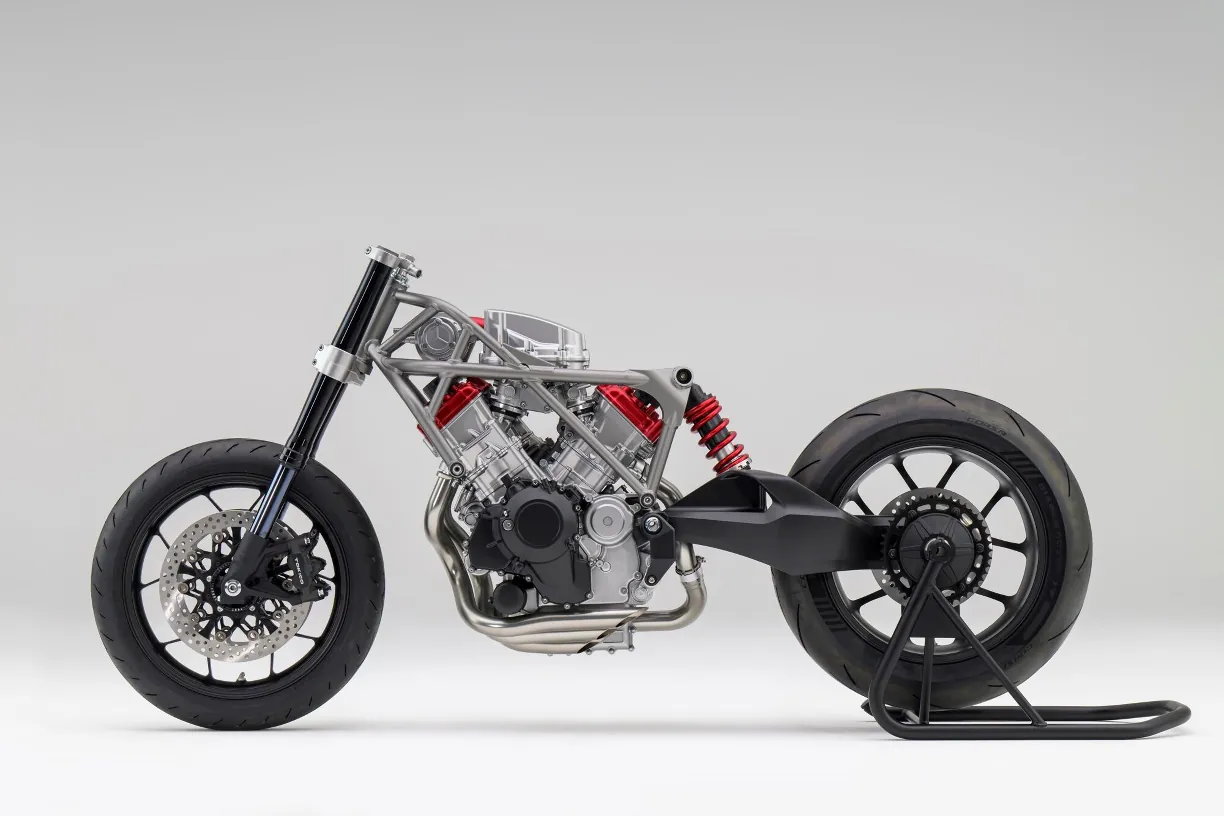
This is now. It’s been nearly four decades, but Honda this week has unveiled an honest-to-goodness V3 engine in a sportbike chassis, and it’s not only a four-stroke, but it also features an innovative electric compressor. Not a turbocharger. Not a supercharger. An electric compressor that offers advantages over both a turbo and supercharger.
Presented in a steel trellis frame that may have been utilized only to provide a better view of the V3 engine and compressor, the concept also incorporates an inverted front fork, single-sided swingarm, Pirelli Diablo Rosso IV tires, and aggressive stance that definitely suggests its sporting (and racing) intentions.
Honda doesn’t mention what the displacement of the new V3 engine is, but they did say it is earmarked for larger-displacement models in the future. “Larger displacement,” as in, perhaps, something in the 800cc to 900cc range? A sportbike that competes against the Triumph, MV Agusta, and Yamaha triples, not to mention four-cylinder motorcycles of smaller displacement like the Kawasaki ZX-6R and Suzuki GSX-R750? And twin-cylinder motorcycles of larger displacement like the Ducati Panigale V2?
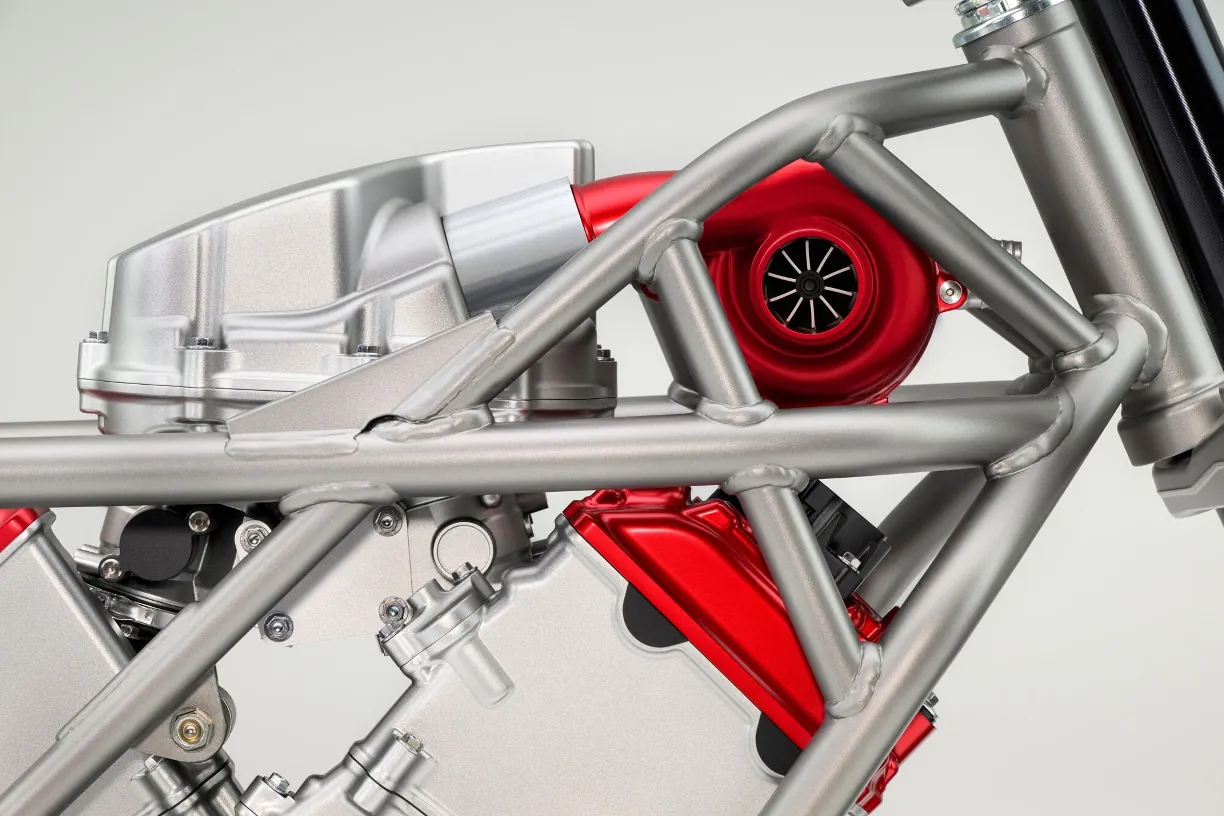
Honda’s new V3 engine architecture has two of its cylinders pointing forward and the third cylinder pointing backward to form a 75° angle. The airbox sits above the front cylinder with an electric compressor attached to it. Whereas turbochargers spin via exhaust flow and superchargers spin via a pulley connected to the engine, the Honda V3 compresses incoming air independent of engine speed, so boost is delivered even at lower rpm. Also, there is no “turbo lag,” and the Honda’s electric-powered compressor doesn’t require an intercooler, either.
We’re hopeful that Honda’s new V3 engine will form the basis for an all-new sportbike that fits perfectly into the FIM’s and MotoAmerica’s Supersport Next Generation class structure. It sure would be nice to see a few Hondas on the grid in MotoAmerica’s ever-popular middleweight class.
Make it so, Big Red.


